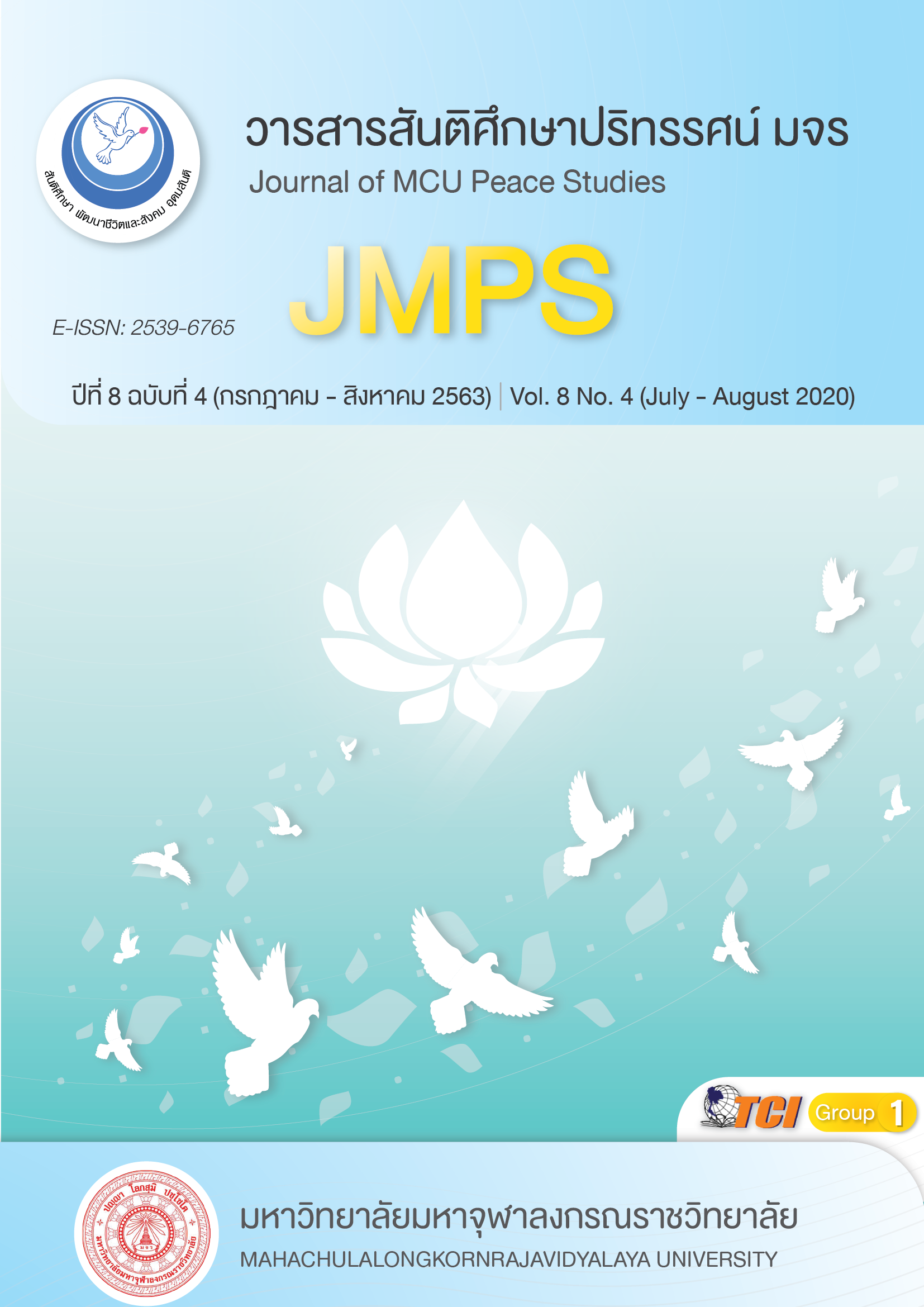กระบวนการสร้างสมดุลระหว่างผู้กระทำผิดกับผู้เสียหายในคดีอาญา ที่เด็กและเยาวชนกระทำผิด โดยพุทธสันติวิธี
Main Article Content
บทคัดย่อ
บทความวิจัยนี้ มีวัตถุประสงค์ 1) ศึกษาสภาพปัญหาและผลกระทบต่อผู้เสียหายอันเกิดจากการดำเนินการตามมาตรการพิเศษแทนการดำเนินคดีอาญากับเด็กและเยาวชนผู้กระทำผิดในคดีอาญา 2) ศึกษากระบวนการสร้างสมดุลระหว่างผู้กระทำผิดกับผู้เสียหายในคดีอาญาที่เด็กและเยาวชนทำผิดตามหลักกระบวนการยุติธรรมทางอาญา และพระพุทธศาสนาเถรวาท 3) นำเสนอกระบวนการสร้างสมดุลระหว่างผู้กระทำผิดกับผู้เสียหายในคดีอาญาที่เด็กและเยาวชนทำผิด โดยพุทธสันติวิธี เป็นการวิจัยเชิงคุณภาพ โดยการศึกษาจากเอกสารและวิธีการสัมภาษณ์เชิงลึก จากผู้ทรงคุณวุฒิด้านกฎหมายเด็กและเยาวชนและบุคคลผู้เกี่ยวข้อง
ผลการศึกษาพบว่า
- ความไม่สมดุลและไม่เป็นธรรม ระหว่างผู้กระทำผิดกับผู้เสียหายในคดีอาญาที่เด็กและเยาวชนเป็นผู้กระทำผิด อันเกิดจาการใช้มาตรการพิเศษแทนการดำเนินคดีอาญาในการบังคับใช้กับเด็กและเยาวชนผู้กระทำผิดให้ได้รับประโยชน์ภายใต้เงื่อนไขและระยะเวลาที่กำหนด ซึ่งจะได้รับสิทธิไม่ถูกฟ้องคดีหรือให้ยุติคดีโดยไม่มีการพิพากษา ผลจากการนี้ 1) ชั้นก่อนฟ้อง ผู้เสียหายต้องนำคดีส่วนแพ่งในส่วนค่าเสียหายไปฟ้องเป็นคดีใหม่ 2) ชั้นหลังฟ้อง ผู้เสียหายก็ต้องนำคดีส่วนแพ่งไปฟ้องคดีเช่นเดิม ก่อให้เกิดความเสียหายทางด้านทรัพย์สินและจิตใจ
- หลักพุทธสันติวิธีที่ใช้ในกระบวนการเยียวยาจิตใจผู้เสียหายคือ “สติ เมตตา อภัยทาน” บูรณาการ ร่วมกับการใช้มาตรการพิเศษแทนการดําเนินคดีอาญาสําหรับคดีเด็กและเยาวชน โดยการพัฒนาจิตของผู้เสียหายให้เกิดสติเป็นเบื้องต้น กำหนดวิธีการให้เกิดความรู้สึกที่ดี และเมตตาแก่ผู้กระทำความผิดและให้อภัยในที่สุด
- นำเสนอกระบวนการการสร้างสมดุล โดยการตั้งศูนย์คุ้มครองสิทธิและช่วยเหลือผู้เสียหายเพื่อติดตามค่าเสียหายและเยียวยาจิตใจโดยพุทธสันติวิธี
Article Details
ทัศนะและความคิดเห็นที่ปรากฏในบทความในวารสาร ถือเป็นความรับผิดชอบของผู้เขียนบทความนั้น และไม่ถือเป็นทัศนะและความรับผิดชอบของกองบรรณาธิการ ยินยอมว่าบทความเป็นลิขสิทธิ์ของวารสาร
เอกสารอ้างอิง
Chantavanich, S. (1997). Qualitative research method. Bangkok: Chulalongkorn College Book Center.
Chatpaitol, N. (2007). Restorative justice: Theory to international practices. Bangkok: Office of the Attorney General.
Jaihan, N. (2009). Research on the process of restorative justice in the court of justice. Bangkok: Rapiwanttana Office of the Judiciary.
Royal Thai Government Gazette. ( 2 0 1 0) . Juvenile and Family Court and Its Procedure Act, B.E. 2010. (November 16, 2010). Retrieved February 18, 2020, from http://www.ilo.org/dyn/natlex/natlex4.detail?p_lang=en&p_isn=89334&p_country=THA&p_count=441
Pakdeethanakul, J. (2015). Rules of law in the context of the constitutional court. Botbandit Journal, 71(1), 20-32.
Panomyan, P. (n.d.). Personal academic paper, protection of the juvenile who committed a crime through special measures instead of criminal prosecution. Bangkok: College of the Constitutional Court.
Phramaha Hansa Dhammahaso. (2004). Remedies for conflicts management through buddishm: The study of Meata Chang River area, Chiangmai Province. ( Doctoral Dissertation). Graduate School: Mahachulalongkornrajavidyalaya University. Ayutthaya.
Phutaspikku. (1990). Than, sil, phawana (ทาน, ศีล, ภาวนา). Bangkok: Mental Health.
Poonhawong, S. (2019). Observation in the legislation of crimes offenses concerning dead bodies of the public pffence. Ubon Ratchathani Rajabhat Law Journal, 6(2), 25-36.
Phra Brahmagunabhorn (P.A.Payutto). (2000). Puttatham, revised and defined. Phra Nakhon Si Ayutthaya: Mahachulalongkornrajavidyalaya University Press.
Rues of the President of the Supreme Court on the Guideline on Consideration of the Rehabilitation Process in the Pre-Litigation B.E. 2014. (February 5, 2014). Royal Gazette, 33-35.
Study of Peace Program Mahachulalongkornrajavidyalaya University. (2014). Forgiveness and restorativeness in Thai society. Retrieved February 18, 2020, from http://www.ps.mcu.ac.th/?p=1530
Traijutakarn, P. (2019). Special measures in lieu of criminal proceedings and rehabilitation of juveniles in justice system. Journal of Social Sciences & Humanities, 45(2), 52-79.
Yurapan, C. (2019). Examination principle in the fact-finding process of criminal procedure. Journal of MCU Nakhondhat, 6(10), 5193-5205.


